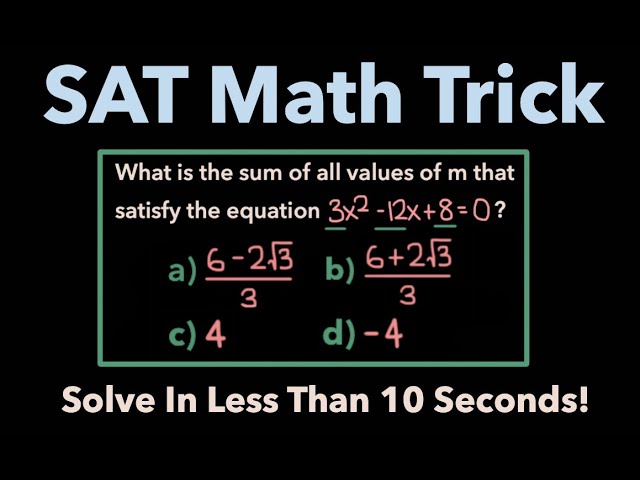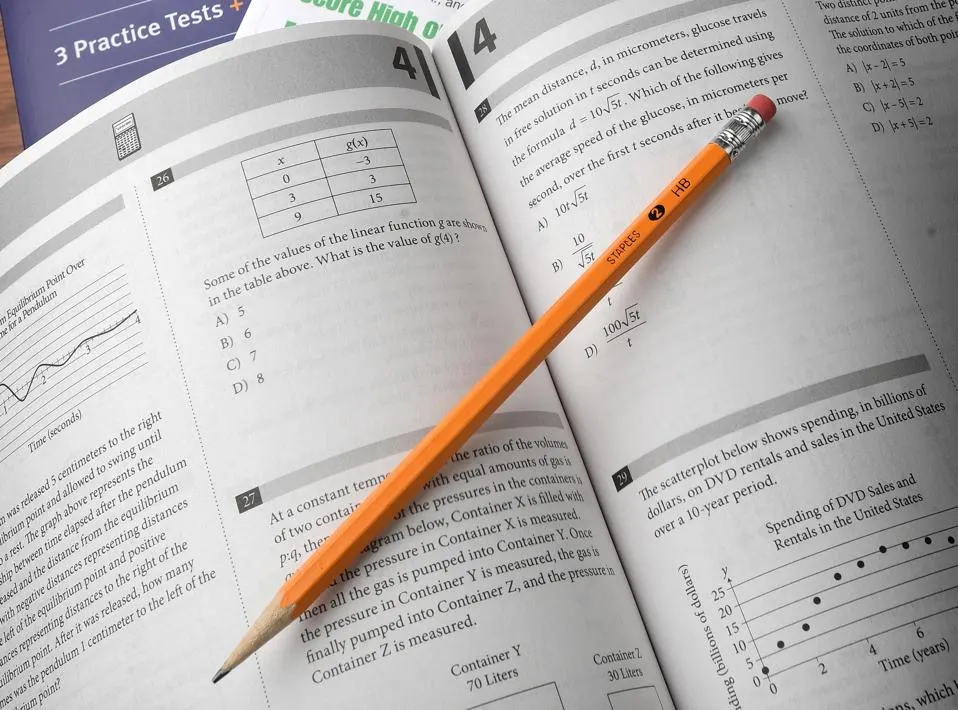Question:
What is Regression
Solution:
### Understanding Regression Analysis
Regression analysis is a powerful statistical tool used to model the relationship between a dependent variable (also known as the response variable) and one or more independent variables (also known as predictor variables or explanatory variables). In simpler terms, it helps us understand how the value of one variable changes when the value of another variable changes. This is a key topic within the “Statistics and Probability” section of the IB Mathematics curriculum.
#### Key Concepts and Terminology
Before diving into the specifics, let’s define some crucial terms:
* **Dependent Variable (y):** The variable we are trying to predict or explain.
* **Independent Variable (x):** The variable(s) used to predict or explain the dependent variable.
* **Regression Equation:** The mathematical equation that describes the relationship between the dependent and independent variables. A simple linear regression equation takes the form: $y = a + bx$, where ‘a’ is the y-intercept and ‘b’ is the slope.
* **Scatter Plot:** A visual representation of the relationship between two variables. It’s the first step in determining if a regression analysis is appropriate.
* **Line of Best Fit:** The line that minimizes the distance between the observed data points and the predicted values from the regression equation. In linear regression, this is a straight line.
* **Residuals:** The difference between the observed values of the dependent variable and the values predicted by the regression equation. A residual is calculated as: $residual = y_{observed} – y_{predicted}$.
* **Least Squares Regression:** A method for finding the line of best fit by minimizing the sum of the squares of the residuals.
* **Coefficient of Determination (R^2):** A statistical measure that indicates the proportion of the variance in the dependent variable that can be predicted from the independent variable(s). It ranges from 0 to 1, with higher values indicating a stronger relationship. $R^2$ is calculated as the square of the Pearson correlation coefficient *r*.
* **Pearson Correlation Coefficient (r):** A measure of the strength and direction of a linear relationship between two variables. It ranges from -1 to 1. Values close to 1 indicate a strong positive correlation, values close to -1 indicate a strong negative correlation, and values close to 0 indicate a weak or no linear correlation.
#### Types of Regression
While regression encompasses a broad range of techniques, the most common type you’ll encounter in introductory statistics, especially within the IB curriculum, is **linear regression**.
* **Simple Linear Regression:** Involves one independent variable and one dependent variable, with the relationship modeled as a straight line.
* **Multiple Linear Regression:** Involves two or more independent variables and one dependent variable, with the relationship modeled as a linear combination of the independent variables.
Other types of regression exist (e.g., polynomial regression, exponential regression), but these are less commonly covered at the introductory IB level.
#### Steps in Performing a Regression Analysis
Here’s a breakdown of the key steps involved in performing a regression analysis:
1. **Data Collection:** Gather data for the dependent and independent variables.
2. **Scatter Plot:** Create a scatter plot to visualize the relationship between the variables. This helps determine if a linear relationship is plausible.
3. **Calculate the Pearson Correlation Coefficient (r):** Use a calculator or statistical software to determine the correlation. This will tell you the strength and direction of the linear relationship.
4. **Determine the Regression Equation:** Use a calculator or statistical software to find the equation of the line of best fit ($y = a + bx$). The calculator typically provides the values for ‘a’ (y-intercept) and ‘b’ (slope).
5. **Interpret the Results:**
* **Slope (b):** Indicates the change in the dependent variable for every one-unit increase in the independent variable.
* **Y-intercept (a):** The predicted value of the dependent variable when the independent variable is zero.
* **Coefficient of Determination (R^2):** Explains the proportion of variance in the dependent variable explained by the independent variable.
6. **Check Residuals:** Create a residual plot (residuals vs. predicted values) to check for patterns. A random scatter of residuals suggests that a linear model is appropriate. Patterns in the residual plot may indicate that a linear model is not the best fit.
7. **Make Predictions:** Use the regression equation to predict values of the dependent variable for given values of the independent variable.
#### Example 1: Simple Linear Regression
Suppose we want to investigate the relationship between the number of hours studied (x) and the exam score (y) for a group of students. We collect the following data:
| Hours Studied (x) | Exam Score (y) |
| —————— | ————– |
| 2 | 55 |
| 4 | 70 |
| 6 | 80 |
| 8 | 85 |
| 10 | 90 |
1. **Scatter Plot:** Plot the data points on a scatter plot. You’ll observe a positive, roughly linear relationship.
2. **Calculator Use:** Enter the data into your calculator (or statistical software) and use the linear regression function. The calculator will output the regression equation.
3. **Regression Equation (Calculator Output):** Let’s assume the calculator gives us the following equation: $y = 50 + 4x$.
4. **Interpretation:**
* **Slope (b = 4):** For every additional hour studied, the exam score is predicted to increase by 4 points.
* **Y-intercept (a = 50):** A student who studies 0 hours is predicted to score 50 on the exam.
* **Coefficient of Determination (Let’s say R^2 = 0.95):** 95% of the variation in exam scores can be explained by the number of hours studied.
5. **Prediction:** If a student studies for 7 hours, the predicted exam score is: $y = 50 + 4(7) = 78$.
#### Example 2: Using a GDC to calculate regression
Consider the following data set showing the relationship between the number of ice creams sold ($x$) and the maximum daily temperature ($y$) in degrees Celsius.
| Temperature ($x$) | Ice Creams Sold ($y$) |
|———————|————————-|
| 20 | 100 |
| 22 | 110 |
| 24 | 130 |
| 26 | 140 |
| 28 | 150 |
| 30 | 160 |
1. **Enter the data:** Input the temperature data into list 1 (L1) and the ice cream data into list 2 (L2) of your GDC.
2. **Calculate the regression equation:**
* Press `MENU`, then select `STATISTICS`.
* Choose `STAT` then `CALC`.
* Select `Linear Regression (mx+b)`.
* Specify L1 for the XList and L2 for the YList.
* Press `OK`.
The GDC will display the linear regression equation in the form $y = a + bx$. Let’s assume the output is:
* $a = -10$
* $b = 5.67$
* $r = 0.997$
* $R^2 = 0.994$
Therefore, the regression equation is: $y = -10 + 5.67x$
3. **Interpretation:**
* **Slope (b = 5.67):** For every 1-degree Celsius increase in temperature, the number of ice creams sold is predicted to increase by approximately 5.67.
* **Y-intercept (a = -10):** This doesn’t have a practical interpretation in this context, as it would imply that -10 ice creams are sold at 0 degrees Celsius.
* **Coefficient of Determination ($R^2 = 0.994$):** Approximately 99.4% of the variation in the number of ice creams sold can be explained by the maximum daily temperature. This indicates a strong positive linear relationship.
* **Pearson Correlation Coefficient (r = 0.997):** This shows a strong positive linear correlation between temperature and ice cream sales.
4. **Prediction:** If the temperature is 25 degrees Celsius, the predicted number of ice creams sold is:
$y = -10 + 5.67(25) = 131.75$. Therefore, we would predict approximately 132 ice creams to be sold.
#### Common Mistakes to Avoid
* **Correlation vs. Causation:** Regression analysis can show a relationship between variables, but it does *not* prove that one variable *causes* the other. There may be other factors
{
“@context”: “https://schema.org”,
“@type”: “FAQPage”,
“mainEntity”: {
“@type”: “Question”,
“name”: “What is Regression”,
“acceptedAnswer”: {
“@type”: “Answer”,
“text”: “Here’s a comprehensive explanation of regression, tailored for IB students:nn### Understanding Regression AnalysisnnRegression analysis is a powerful statistical tool used to model the relationship between a dependent variable (also known as the response variable) and one or more independent variables (also known as predictor variables or explanatory variables). In simpler terms, it helps us understand how the value of one variable changes when the value of another variable changes. This is a key topic within the “Statistics and Probability” section of the IB Mathematics curriculum.nn#### Key Concepts and TerminologynnBefore diving into the specifics, let’s define some crucial terms:nn* **Dependent Variable (y):** The variable we are trying to predict or explain.n* **Independent Variable (x):** The variable(s) used to predict or explain the dependent variable.n* **Regression Equation:** The mathematical equation that describes the relationship between the dependent and independent variables. A simple linear regression equation takes the form: $y = a + bx$, where ‘a’ is the y-intercept and ‘b’ is the slope.n* **Scatter Plot:** A visual representation of the relationship between two variables. It’s the first step in determining if a regression analysis is appropriate.n* **Line of Best Fit:** The line that minimizes the distance between the observed data points and the predicted values from the regression equation. In linear regression, this is a straight line.n* **Residuals:** The difference between the observed values of the dependent variable and the values predicted by the regression equation. A residual is calculated as: $residual = y_{observed} – y_{predicted}$.n* **Least Squares Regression:** A method for finding the line of best fit by minimizing the sum of the squares of the residuals.n* **Coefficient of Determination (R^2):** A statistical measure that indicates the proportion of the variance in the dependent variable that can be predicted from the independent variable(s). It ranges from 0 to 1, with higher values indicating a stronger relationship. $R^2$ is calculated as the square of the Pearson correlation coefficient *r*.n* **Pearson Correlation Coefficient (r):** A measure of the strength and direction of a linear relationship between two variables. It ranges from -1 to 1. Values close to 1 indicate a strong positive correlation, values close to -1 indicate a strong negative correlation, and values close to 0 indicate a weak or no linear correlation.nn#### Types of RegressionnnWhile regression encompasses a broad range of techniques, the most common type you’ll encounter in introductory statistics, especially within the IB curriculum, is **linear regression**.nn* **Simple Linear Regression:** Involves one independent variable and one dependent variable, with the relationship modeled as a straight line.n* **Multiple Linear Regression:** Involves two or more independent variables and one dependent variable, with the relationship modeled as a linear combination of the independent variables.nnOther types of regression exist (e.g., polynomial regression, exponential regression), but these are less commonly covered at the introductory IB level.nn#### Steps in Performing a Regression AnalysisnnHere’s a breakdown of the key steps involved in performing a regression analysis:nn1. **Data Collection:** Gather data for the dependent and independent variables.n2. **Scatter Plot:** Create a scatter plot to visualize the relationship between the variables. This helps determine if a linear relationship is plausible.n3. **Calculate the Pearson Correlation Coefficient (r):** Use a calculator or statistical software to determine the correlation. This will tell you the strength and direction of the linear relationship.n4. **Determine the Regression Equation:** Use a calculator or statistical software to find the equation of the line of best fit ($y = a + bx$). The calculator typically provides the values for ‘a’ (y-intercept) and ‘b’ (slope).n5. **Interpret the Results:**n * **Slope (b):** Indicates the change in the dependent variable for every one-unit increase in the independent variable.n * **Y-intercept (a):** The predicted value of the dependent variable when the independent variable is zero.n * **Coefficient of Determination (R^2):** Explains the proportion of variance in the dependent variable explained by the independent variable.n6. **Check Residuals:** Create a residual plot (residuals vs. predicted values) to check for patterns. A random scatter of residuals suggests that a linear model is appropriate. Patterns in the residual plot may indicate that a linear model is not the best fit.n7. **Make Predictions:** Use the regression equation to predict values of the dependent variable for given values of the independent variable.nn#### Example 1: Simple Linear RegressionnnSuppose we want to investigate the relationship between the number of hours studied (x) and the exam score (y) for a group of students. We collect the following data:nn| Hours Studied (x) | Exam Score (y) |n| —————— | ————– |n| 2 | 55 |n| 4 | 70 |n| 6 | 80 |n| 8 | 85 |n| 10 | 90 |nn1. **Scatter Plot:** Plot the data points on a scatter plot. You’ll observe a positive, roughly linear relationship.n2. **Calculator Use:** Enter the data into your calculator (or statistical software) and use the linear regression function. The calculator will output the regression equation.n3. **Regression Equation (Calculator Output):** Let’s assume the calculator gives us the following equation: $y = 50 + 4x$.n4. **Interpretation:**n * **Slope (b = 4):** For every additional hour studied, the exam score is predicted to increase by 4 points.n * **Y-intercept (a = 50):** A student who studies 0 hours is predicted to score 50 on the exam.n * **Coefficient of Determination (Let’s say R^2 = 0.95):** 95% of the variation in exam scores can be explained by the number of hours studied.n5. **Prediction:** If a student studies for 7 hours, the predicted exam score is: $y = 50 + 4(7) = 78$.nn#### Example 2: Using a GDC to calculate regressionnnConsider the following data set showing the relationship between the number of ice creams sold ($x$) and the maximum daily temperature ($y$) in degrees Celsius.nn| Temperature ($x$) | Ice Creams Sold ($y$) |n|———————|————————-|n| 20 | 100 |n| 22 | 110 |n| 24 | 130 |n| 26 | 140 |n| 28 | 150 |n| 30 | 160 |nn1. **Enter the data:** Input the temperature data into list 1 (L1) and the ice cream data into list 2 (L2) of your GDC.n2. **Calculate the regression equation:**n * Press `MENU`, then select `STATISTICS`.n * Choose `STAT` then `CALC`.n * Select `Linear Regression (mx+b)`.n * Specify L1 for the XList and L2 for the YList.n * Press `OK`.nn The GDC will display the linear regression equation in the form $y = a + bx$. Let’s assume the output is:n * $a = -10$n * $b = 5.67$n * $r = 0.997$n * $R^2 = 0.994$n Therefore, the regression equation is: $y = -10 + 5.67x$n3. **Interpretation:**n * **Slope (b = 5.67):** For every 1-degree Celsius increase in temperature, the number of ice creams sold is predicted to increase by approximately 5.67.n * **Y-intercept (a = -10):** This doesn’t have a practical interpretation in this context, as it would imply that -10 ice creams are sold at 0 degrees Celsius.n * **Coefficient of Determination ($R^2 = 0.994$):** Approximately 99.4% of the variation in the number of ice creams sold can be explained by the maximum daily temperature. This indicates a strong positive linear relationship.n * **Pearson Correlation Coefficient (r = 0.997):** This shows a strong positive linear correlation between temperature and ice cream sales.n4. **Prediction:** If the temperature is 25 degrees Celsius, the predicted number of ice creams sold is:n $y = -10 + 5.67(25) = 131.75$. Therefore, we would predict approximately 132 ice creams to be sold.nn#### Common Mistakes to Avoidnn* **Correlation vs. Causation:** Regression analysis can show a relationship between variables, but it does *not* prove that one variable *causes* the other. There may be other factors”
}
}
}


